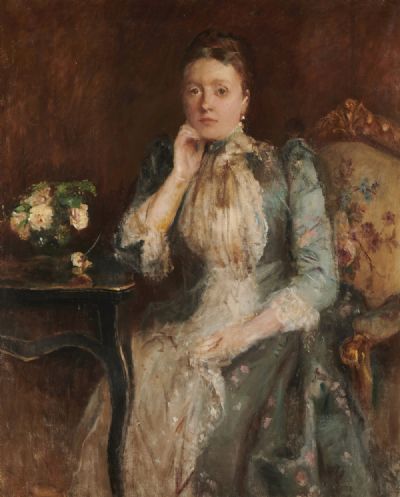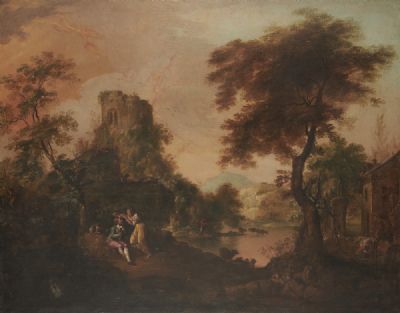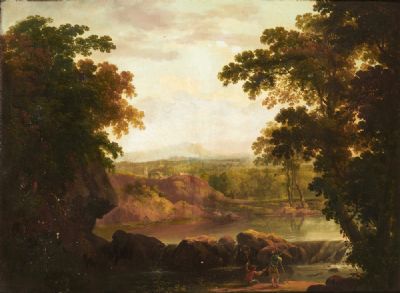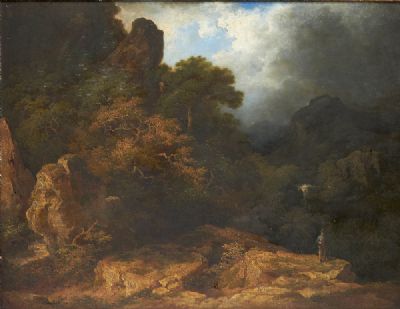Bidding on this item has ended.
Nathaniel Grogan
BREAKING UP OF AN IRISH FAIR
Lot 51
Price Realised:
€17,000
Estimate:
€20,000 - €30,000
Nathaniel Grogan, 1740 - 1807
BREAKING UP OF AN IRISH FAIR
Oil on canvas, 46" x 60" (117 x 152 cm)
Provenance: Painted for Sir Richard Kellett of Lotabeg, Cork; By 1828 in the collection of a Mr Denny
Exhibited: Whipping The Herring...
Read more
 Lot 51
Nathaniel Grogan
BREAKING UP OF AN IRISH FAIR
Lot 51
Nathaniel Grogan
BREAKING UP OF AN IRISH FAIR
 Lot 51
Nathaniel Grogan
BREAKING UP OF AN IRISH FAIR
Lot 51
Nathaniel Grogan
BREAKING UP OF AN IRISH FAIR
Estimate:
€20,000 - €30,000
Nathaniel Grogan, 1740 - 1807
BREAKING UP OF AN IRISH FAIR
Oil on canvas, 46" x 60" (117 x 152 cm)
Provenance: Painted for Sir Richard Kellett of Lotabeg, Cork; By 1828 in the collection of a Mr Denny
Exhibited: Whipping The Herring; Survival and Celebration in Nineteenth Century Irish Art, Crawford Municipal Gallery, Cork (May 4 - Aug 26 2006); A Question of Attribution: The Arcadian Landscapes of Nathaniel Grogan and John Butts, Crawford Municipal Gallery, Cork (2012).
Literature: Bolsters Quarterly Magazine (No. 5. Vol. 2, 1828) John Francis Maguire, The Industrial Movement in Ireland as Illustrated by the National Exhibition of 1852 (Cork, 1853); John Day, 'Nathaniel Grogan', Journal of the Cork Historical and Archaeological Society, Vol. VI, 2nd Series, (1900) pp. 106-09; Walter Strickland, A Dictionary of Irish Artists (Dublin and London, 1913) Vol. 1, p. 414; Anne Crookshank and the Knight of Glin, The Painters of Ireland c. 1660-1920 (London, 1978) p. 139; Anne Crookshank and the Knight of Glin, Ireland's Painters, 1600-1940 (New Haven and London, 2002) p. 157; Tom Dunne in Peter Murray (ed), Whipping The Herring; Survival and Celebration in Nineteenth Century Irish Art, Exhibition Catalogue Crawford Municipal Gallery, Cork (Cork 2006). pp. 86-87; Tom Dunne, in Peter Murray (ed), A Question of Attribution: The Arcadian Landscapes of Nathaniel Grogan and John Butts, Exhibition Catalogue, Crawford Municipal Gallery, Cork (2012) pp. 76-79; Claudia Kinmonth, Irish Rural Interiors in Art (New Haven and London, 2006) p. 209
Nicola Figgis, in Nicola Figgis (ed.), Art and Architecture of Ireland, Volume 2 (Dublin, 2014) p. 276
In 1853 John Francis Maguire was one of many nineteenth-century commentators to hail this painting as one of Grogan's finest: 'In some of his best works, Grogan reminds one of [David] Teniers, in his truthfulness, and perhaps a little in his coarseness; while there is much of [David] Wilkie in his admirable detail. The best of his works, of which I know, is "The Breaking up of an Irish Fair", which exhibits his power equally in landscape as in figure painting'. Making use of an earlier source written two decades after the artist's death, in 1900 John Day wrote a biographical sketch of the artist in which he singled out the work as Grogan's masterpiece: 'Breaking up of an Irish Fair…contains an assemblage of groups so good in point of composition, taste, and character, as seems to defy competition'. When it was exhibited in the Crawford Art Gallery's show devoted to Grogan and his fellow Cork artist - and teacher - John Butts, Tom Dunne noted that it was 'one of the best-known and regarded Cork paintings throughout the nineteenth century'. Arguing that Grogan has been viewed far too narrowly as a painter of 'low life' comedy (the 'apt delineation of humorous subjects; in which he correctly represents the manners and customs of the Irish peasantry', as Anthony Pasquin put it in the artist's lifetime) Prof. Dunne argues that
"there was much more to Grogan - and to this painting - than that. Like the early nineteenth-century Irish novelists who also pandered to the market for humorous depictions of the Irish poor, Grogan's art revealed a wider panorama of Irish life - commerce, industry and the bustle of city life, as well as idyllic landscapes - work and poverty as much as carnival and fun."
Grogan's subject here is the end of an Irish fair. Overlooked by a tower house on a rocky promontory, scores of figures go about their tasks as they pack up. Livestock are rounded up, carts loaded and horses saddled. On the left, outside what seems to be a shebeen, others linger to drink and talk. Many though have already headed home and on the right a crowd pours across a bridge in the distance. Their white garments catching the eye at the centre of the composition, a couple dance, seemingly flirtatiously. Next to them stands a soldier in uniform, identified as a recruiting sergeant, taking advantage of those rendered helpless through intoxication. Dunne wryly notes other details: 'a man relieves himself against a wall, two other men kiss, and another is so inebriated that he attempts to climb out a high window'. Despite such antics, it is, in general, a picture of rural solidarity and community which, while influenced by the Dutch kermesse tradition, is specifically Irish in subject, mood and arguably even aesthetic, offering a much more authentic vision of Irish rural life than say the artificially picturesque depictions of Donnybrook Fair by Francis Wheatley of a decade or two earlier. Day's account continues: 'The contrivance of this picture for displaying a number of figures and the art which the herd of cattle driven across the stream is introduced, make it the most skilful while it is also the most elaborate of Grogan's works'.
William Laffan, 2022
BREAKING UP OF AN IRISH FAIR
Oil on canvas, 46" x 60" (117 x 152 cm)
Provenance: Painted for Sir Richard Kellett of Lotabeg, Cork; By 1828 in the collection of a Mr Denny
Exhibited: Whipping The Herring; Survival and Celebration in Nineteenth Century Irish Art, Crawford Municipal Gallery, Cork (May 4 - Aug 26 2006); A Question of Attribution: The Arcadian Landscapes of Nathaniel Grogan and John Butts, Crawford Municipal Gallery, Cork (2012).
Literature: Bolsters Quarterly Magazine (No. 5. Vol. 2, 1828) John Francis Maguire, The Industrial Movement in Ireland as Illustrated by the National Exhibition of 1852 (Cork, 1853); John Day, 'Nathaniel Grogan', Journal of the Cork Historical and Archaeological Society, Vol. VI, 2nd Series, (1900) pp. 106-09; Walter Strickland, A Dictionary of Irish Artists (Dublin and London, 1913) Vol. 1, p. 414; Anne Crookshank and the Knight of Glin, The Painters of Ireland c. 1660-1920 (London, 1978) p. 139; Anne Crookshank and the Knight of Glin, Ireland's Painters, 1600-1940 (New Haven and London, 2002) p. 157; Tom Dunne in Peter Murray (ed), Whipping The Herring; Survival and Celebration in Nineteenth Century Irish Art, Exhibition Catalogue Crawford Municipal Gallery, Cork (Cork 2006). pp. 86-87; Tom Dunne, in Peter Murray (ed), A Question of Attribution: The Arcadian Landscapes of Nathaniel Grogan and John Butts, Exhibition Catalogue, Crawford Municipal Gallery, Cork (2012) pp. 76-79; Claudia Kinmonth, Irish Rural Interiors in Art (New Haven and London, 2006) p. 209
Nicola Figgis, in Nicola Figgis (ed.), Art and Architecture of Ireland, Volume 2 (Dublin, 2014) p. 276
In 1853 John Francis Maguire was one of many nineteenth-century commentators to hail this painting as one of Grogan's finest: 'In some of his best works, Grogan reminds one of [David] Teniers, in his truthfulness, and perhaps a little in his coarseness; while there is much of [David] Wilkie in his admirable detail. The best of his works, of which I know, is "The Breaking up of an Irish Fair", which exhibits his power equally in landscape as in figure painting'. Making use of an earlier source written two decades after the artist's death, in 1900 John Day wrote a biographical sketch of the artist in which he singled out the work as Grogan's masterpiece: 'Breaking up of an Irish Fair…contains an assemblage of groups so good in point of composition, taste, and character, as seems to defy competition'. When it was exhibited in the Crawford Art Gallery's show devoted to Grogan and his fellow Cork artist - and teacher - John Butts, Tom Dunne noted that it was 'one of the best-known and regarded Cork paintings throughout the nineteenth century'. Arguing that Grogan has been viewed far too narrowly as a painter of 'low life' comedy (the 'apt delineation of humorous subjects; in which he correctly represents the manners and customs of the Irish peasantry', as Anthony Pasquin put it in the artist's lifetime) Prof. Dunne argues that
"there was much more to Grogan - and to this painting - than that. Like the early nineteenth-century Irish novelists who also pandered to the market for humorous depictions of the Irish poor, Grogan's art revealed a wider panorama of Irish life - commerce, industry and the bustle of city life, as well as idyllic landscapes - work and poverty as much as carnival and fun."
Grogan's subject here is the end of an Irish fair. Overlooked by a tower house on a rocky promontory, scores of figures go about their tasks as they pack up. Livestock are rounded up, carts loaded and horses saddled. On the left, outside what seems to be a shebeen, others linger to drink and talk. Many though have already headed home and on the right a crowd pours across a bridge in the distance. Their white garments catching the eye at the centre of the composition, a couple dance, seemingly flirtatiously. Next to them stands a soldier in uniform, identified as a recruiting sergeant, taking advantage of those rendered helpless through intoxication. Dunne wryly notes other details: 'a man relieves himself against a wall, two other men kiss, and another is so inebriated that he attempts to climb out a high window'. Despite such antics, it is, in general, a picture of rural solidarity and community which, while influenced by the Dutch kermesse tradition, is specifically Irish in subject, mood and arguably even aesthetic, offering a much more authentic vision of Irish rural life than say the artificially picturesque depictions of Donnybrook Fair by Francis Wheatley of a decade or two earlier. Day's account continues: 'The contrivance of this picture for displaying a number of figures and the art which the herd of cattle driven across the stream is introduced, make it the most skilful while it is also the most elaborate of Grogan's works'.
William Laffan, 2022
- Enquire
- View all lots by this artist
- How bidding works
Please note: You will require a deVeres account in order to bid. Please register via the website. Each lot will close numerically. If there is late bidding the time may be extended which could delay subsequent lots. The lots will start to close from 2.00pm on auction day, closing at 45 second intervals.
PLEASE BID EARLY TO AVOID DISAPPOINTMENT.
In order to allow rival bidders the opportunity to respond to a late bid the following extensions will apply:
IF A BID IS RECEIVED WITHIN THE FINAL 45 SECONDS OF THE COUNTDOWN THE CLOCK WILL RESET TO 60 SECONDS.
At any point you can leave a maximum bid, representing the highest price you are prepared to pay for a particular lot. Bidding only advances when there is competition from a rival bidder. In that case the system bids on your behalf, only up to the maximum if required. All bids are relayed to you be email, along with notification if you have been outbid.
All maximum bids are confidential and not disclosed. The system will endeavor to purchase the lot for you for the least price. Bids are subject to buyer’s premium of 25% (incl vat), with no additional charges.
In the event of a tied bid, the preference will be given to the bid submitted first. The second bidder will receive immediate notification of being outbid.
PLEASE BID EARLY TO AVOID DISAPPOINTMENT.
In order to allow rival bidders the opportunity to respond to a late bid the following extensions will apply:
IF A BID IS RECEIVED WITHIN THE FINAL 45 SECONDS OF THE COUNTDOWN THE CLOCK WILL RESET TO 60 SECONDS.
At any point you can leave a maximum bid, representing the highest price you are prepared to pay for a particular lot. Bidding only advances when there is competition from a rival bidder. In that case the system bids on your behalf, only up to the maximum if required. All bids are relayed to you be email, along with notification if you have been outbid.
All maximum bids are confidential and not disclosed. The system will endeavor to purchase the lot for you for the least price. Bids are subject to buyer’s premium of 25% (incl vat), with no additional charges.
In the event of a tied bid, the preference will be given to the bid submitted first. The second bidder will receive immediate notification of being outbid.
Sign-up to our auction alert
Signup for personalised Irish art recommendations, invitations to viewings and auctions, articles and more.

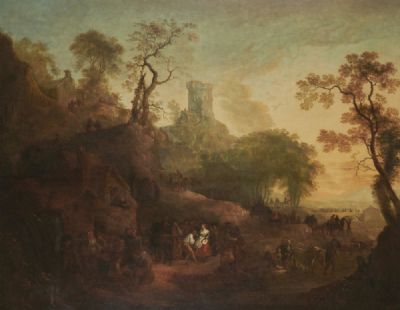
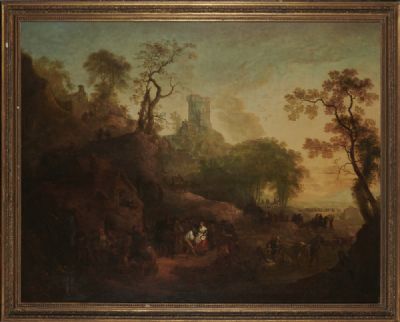
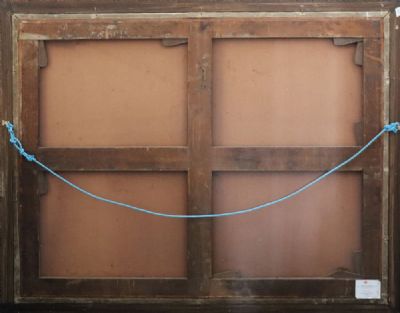
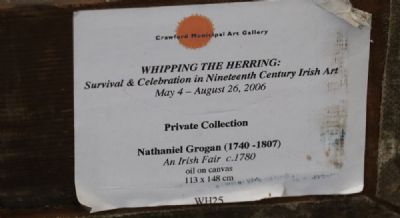
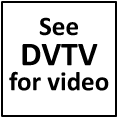 View More Videos
View More Videos DVTV Click Here To View Video
DVTV Click Here To View Video